Our Library
Explore our publications, from research papers and series to educational materials, covering all aspects of conflict transformation and peace promotion.
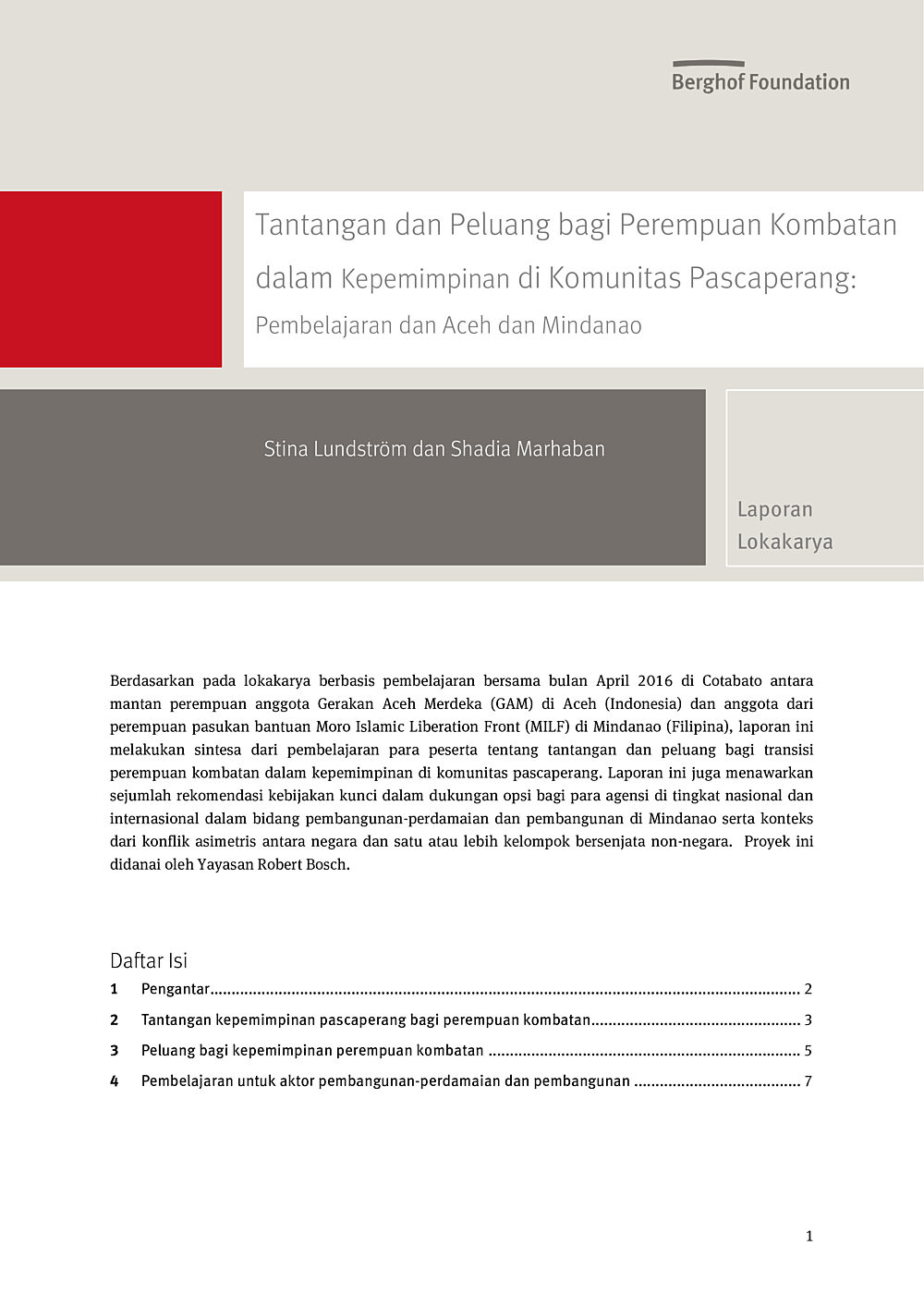
Tantangan dan Peluang bagi Perempuan Kombatan dalam Kepemimpinan di Komunitas PascaperangPembelajaran dan Aceh dan Mindanao (Laporan Lokakarya)
Berdasarkan pada lokakarya berbasis pembelajaran bersama bulan April 2016 di Cotabato antara mantan perempuan anggota Gerakan Aceh Merdeka (GAM) di Aceh (Indonesia) dan anggota dari perempuan pasukan bantuan Moro Islamic Liberation Front (MILF) di Mindanao (Filipina), laporan ini melakukan sintesa dari pembelajaran para peserta tentang tantangan dan peluang bagi transisi perempuan kombatan dalam kepemimpinan di komunitas pascaperang. Laporan ini juga menawarkan sejumlah rekomendasi kebijakan kunci dalam dukungan opsi bagi para agensi di tingkat nasional dan internasional dalam bidang pembangunan-perdamaian dan pembangunan di Mindanao serta konteks dari konflik asimetris antara negara dan satu atau lebih kelompok bersenjata non-negara.
- Year2016
- Author(s)Stina Lundström, Shadia Marhaban
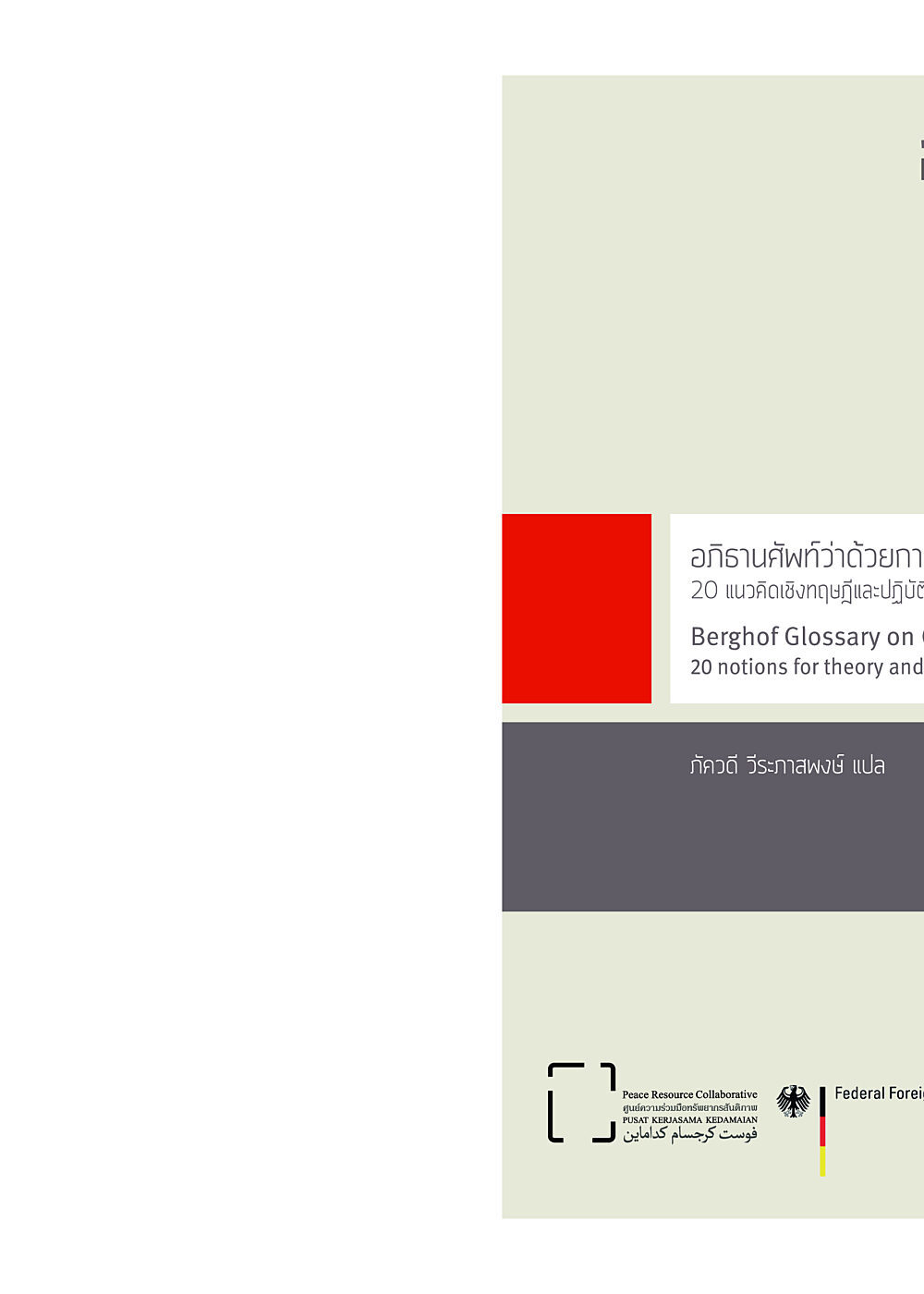
อภิธานศัพท์ว่าด้วยการแปรเปลี่ยนความขัดแย้ง20 แนวคิดเชิงทฤษฎีและปฏิบัติ
หนังสืออภิธานศัพท์เล่มนี้นิยามและอภิปรายถึงค�ำศัพท์ส�ำคัญ 20 ค�ำ ที่เกี่ยวข้องกับการแปรเปลี่ยนความขัดแย้งในการท�ำงานของมูลนิธิ Berghof ท�ำไมจึงต้องจัดท�ำอภิธานศัพท์อีกเล่มและท�ำไมต้องจ�ำเพาะ เจาะจงเป็นอภิธานศัพท์ว่าด้วยการแปรเปลี่ยนความขัดแย้งด้วย? ประการแรก กรอบความคิดเกี่ยวกับ “การแปรเปลี่ยนความขัดแย้ง” เป็นแนวทางที่ค่อนข้างใหม่และมีความแตกต่างชัดเจนในวาทกรรม ระดับโลกเกี่ยวกับความขัดแย้งและกระบวนการสร้างสันติภาพ การ แปรเปลี่ยนความขัดแย้งมีทัศนะว่าการด�ำรงอยู่ของความขัดแย้งเป็น ส่วนที่มีคุณค่าและขาดไม่ได้ในการเปลี่ยนแปลงและการพัฒนาสังคม แต่ไม่ได้มองว่าความรุนแรงเป็นสิ่งที่หลีกเลี่ยงไม่ได้ในความสัมพันธ์ และปฏิสัมพันธ์ระหว่างฝ่ายขัดแย้ง ด้วยเหตุนี้เอง แนวทางนี้จึงไม่ได้ มองว่า “การคลี่คลาย” ความขัดแย้งเป็นเป้าหมายส�ำคัญที่สุดหรือ สูงสุดของภารกิจ ตรงกันข้าม แนวทางนี้มีเป้าหมายที่จะวางรากฐาน ความสัมพันธ์เชิงสร้างสรรค์ระหว่างตัวแสดงที่ขัดแย้งกัน และช่วยวาง โครงสร้างที่จ�ำเป็นส�ำหรับสันติภาพที่ยืนยาว วิธีการที่ใช้คือการโน้มน�ำ สาเหตุที่เป็นรากเหง้าของความขัดแย้งไปในทิศทางที่ยุทธศาสตร์ การไม่ใช้ความรุนแรงสามารถจัดการปัญหาได้ส�ำเร็จอย่างยั่งยืน
- Year2016
- Author(s)Berghof Foundation
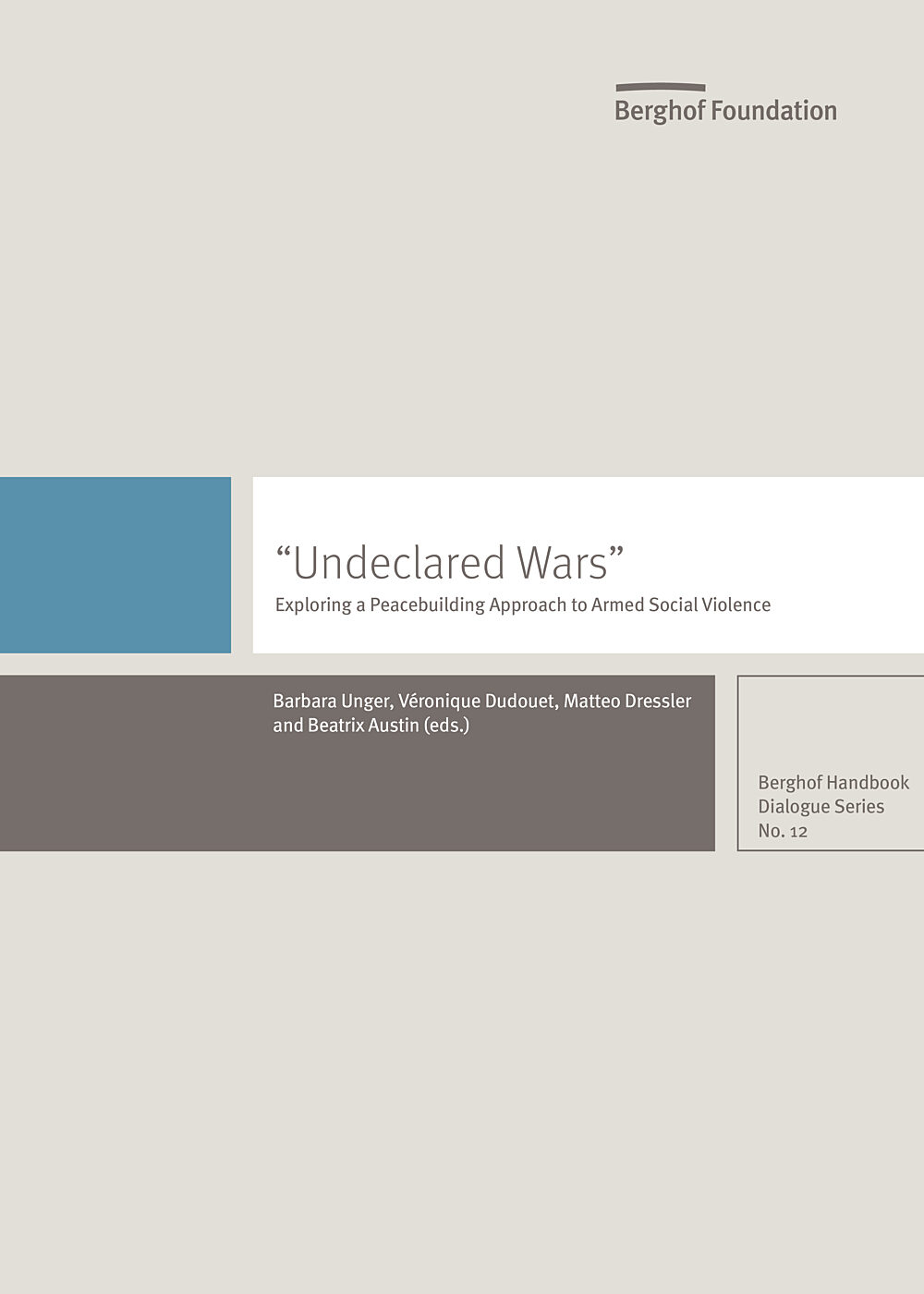
“Undeclared Wars”– Exploring a Peacebuilding Approach to Armed Social ViolenceHandbook Dialogue Series No. 12 - complete
In some countries, more civilians are being killed by armed gangs and criminal organisations than in traditional combat. Still, these pockets of armed social violence – "undeclared wars" marked, among other things, by criminal, gang and/or urban violence as well as extremist violence – have long received much less attention than politically motivated forms of armed conflicts. As their effects — social-political destabilisation, in some cases coinciding with high numbers of victims — are becoming more pressing, national and international actors have begun addressing the phenomenon.
- Year2016

Post-war Political SettlementsFrom Participatory Transition Processes to Inclusive State-building and Governance
The last decade has seen a growing convergence of policy and research discourses among development, peace and conflict, and democratisation experts, with regards to the assumed benefits of inclusive transition processes from conflict and fragility to peace and resilience. The realisation that the social, economic or political exclusion of large segments of society is a key driver of intra-state wars has prompted donor agencies, diplomats and peacebuilding practitioners, as well as the respective academic communities, to search for the right formula to support inclusive and participatory conflict transformation mechanisms and post-war state-society relations. While these various stakeholders profess rhetorical commitment to inclusivity, the term is used in very different and sometimes even in contradictory ways. There are profound disagreements on who should be included in peace processes and political transitions, at what stage and to what end.
- Year2016
- Author(s)Véronique Dudouet, Stina Lundström
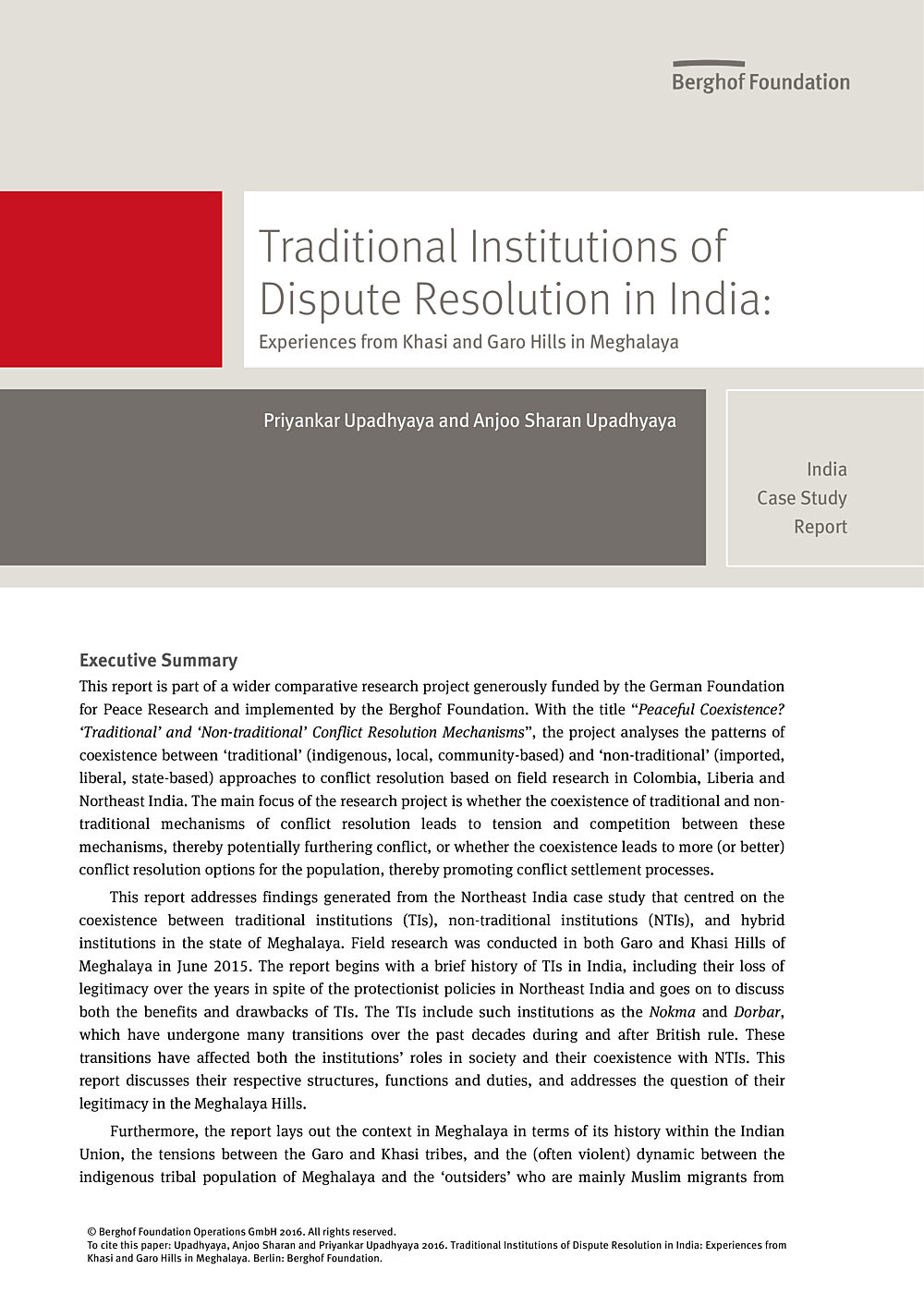
Traditional Institutions of Dispute Resolution in IndiaExperiences from Khasi and Garo Hills in Meghalaya (Case Study)
This report is part of a wider comparative research project generously funded by the German Foundation for Peace Research and implemented by the Berghof Foundation. With the title “Peaceful Coexistence? ‘Traditional’ and ‘Non-traditional’ Conflict Resolution Mechanisms”, the project analyses the patterns of coexistence between ‘traditional’ (indigenous, local, community-based) and ‘non-traditional’ (imported, liberal, state-based) approaches to conflict resolution based on field research in Colombia, Liberia and Northeast India. The main focus of the research project is whether the coexistence of traditional and non-traditional mechanisms of conflict resolution leads to tension and competition between these mechanisms, thereby potentially furthering conflict, or whether the coexistence leads to more (or better) conflict resolution options for the population, thereby promoting conflict settlement processes.
- Year2016
- Author(s)Priyankar Upadhyaya, Anjoo Sharan Upadhyaya

Berghof Foundation Annual Report 2015
Our 2015 annual report lays out some of the activities implemented by our organisation and highlights key achievements of our work over the past year. It illustrates the manifold approaches that we employ as we support our partners in their efforts to transform violent conflicts and engage in cooperation towards peace.
- Year2016

Berghof Foundation Jahresbericht 2015
Unser Jahresbericht 2015 informiert über einige Aktivitäten und Höhepunkte unserer Arbeit. Er gibt einen Einblick in die von uns unternommenen Anstrengungen, unsere Partner in aller Welt in deren Bemühungen bei der Überwindung von Gewalt und für den Frieden zu unterstützen.
- Year2016
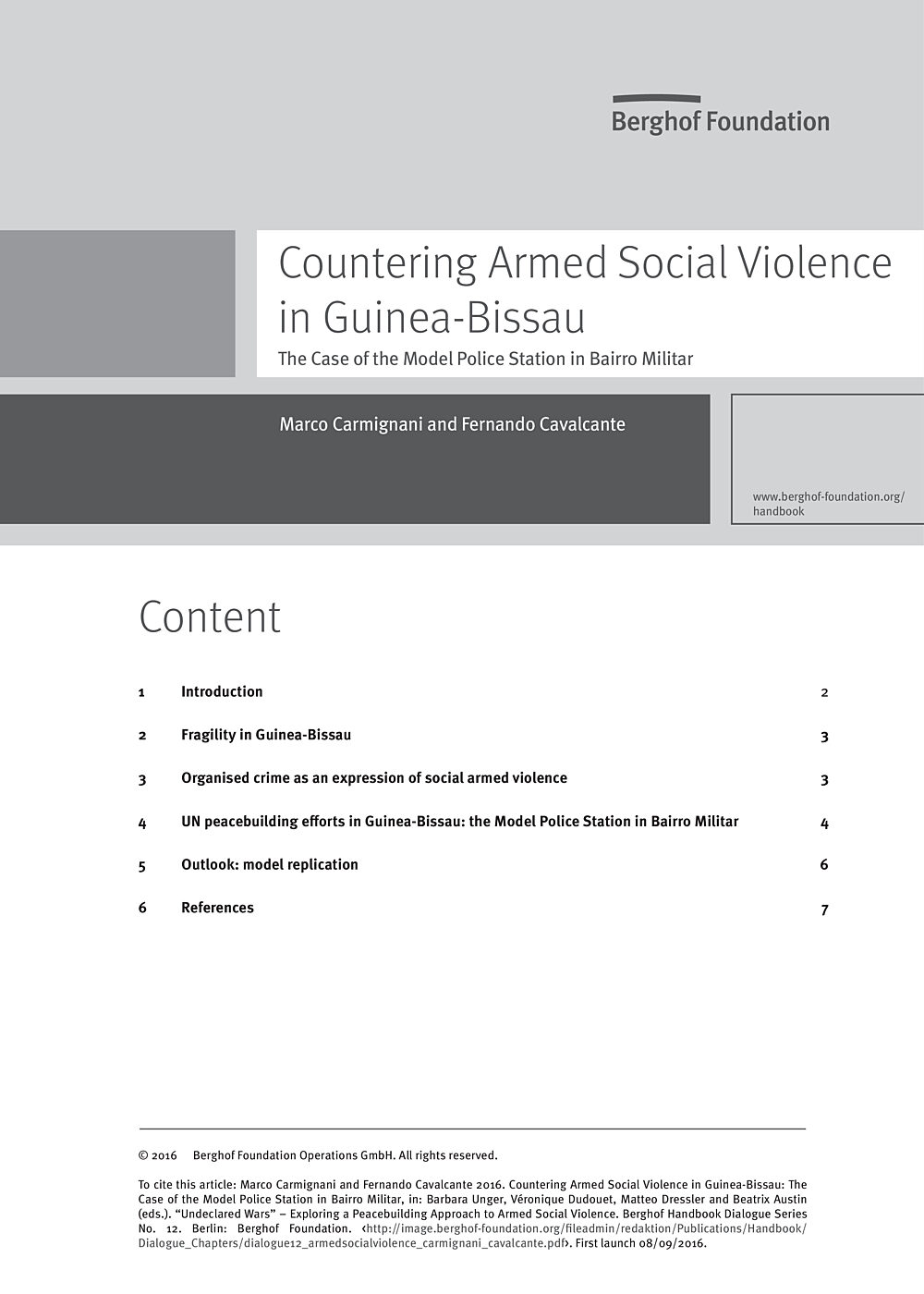
Countering Armed Social Violence in Guinea-Bissau: The Case of the Model Police StationBerghof Handbook Dialogue Series No. 12 - comment
Our response explores the application of these participatory and community-informed approaches in the context of Guinea-Bissau, where a community-based policing model, the Model Police Stations (MPS), had its genesis in participatory research. Participatory research has also informed activities in other areas,such as the prevention of gender violence. In 2011, for example, a comprehensive portrayal of the violence against women in the country resulted from the combination of quantitative data with qualitative research on perceptions (see Roque 2011).
- Year2016
- Author(s)Marco Carmignani, Fernando Cavalcante
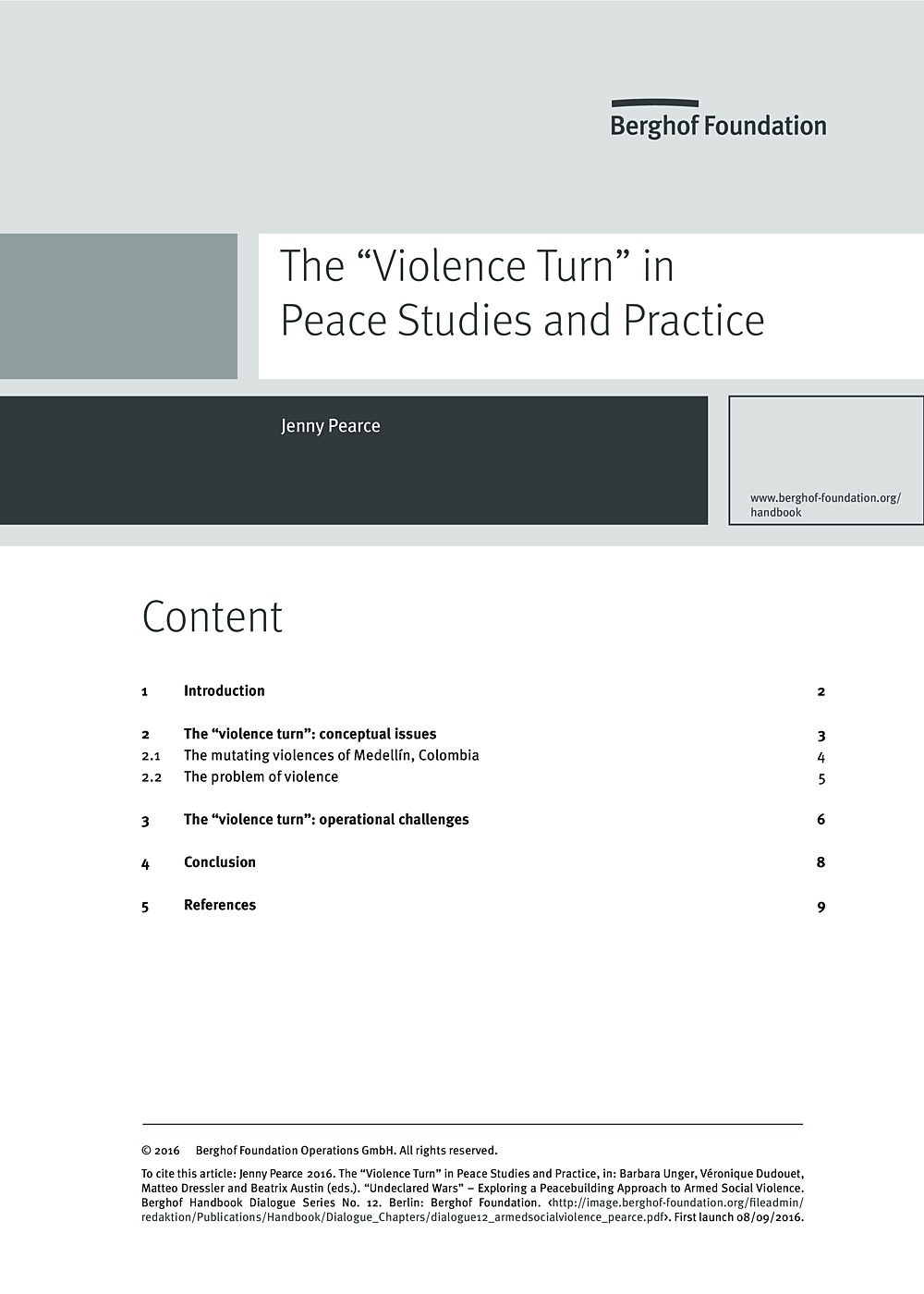
The “Violence Turn” in Peace Studies and PracticeBerghof Handbook Dialogue Series No. 12 - comment
Bernardo Arévalo de León and Ana Glenda Tager have written a succinct and substantive article, which adds to evidence of a shift from the centrality of war and conflict (armed and non-armed) in the study and practice of peace, towards a focus on violence, or rather that aspect of violence the authors call “armed social violence”. Violence, I argue, is the opposite of peace and this step towards recognising the wider expressions of violence is to be greatly welcomed. Violence is extensively studied, but in disciplinary silos. We lack a “converter” to enable us to interpret the learning from these various silos and to help us build new understandings of the varied mechanisms of violence reproduction and reduction. Despite nods to interdisciplinarity, academia reinforces the silos, while practice cannot easily embrace the complexity within and between each.
- Year2016
- Author(s)Jenny Pearce

The Value of Listening to Community Voices. A Peacebuilding Approach to Armed Social ViolenceBerghof Handbook Dialogue Series No. 12 - comment
We respond to the lead article from the point of view of conflict transformation practitioners from the Centre for Peace and Conflict Studies (CPCS), a non-governmental organisation based in Siem Reap, Cambodia, which focuses on strengthening and supporting the peace processes in the Philippines and Myanmar and peacebuilding efforts in Sri Lanka. We thus operate within contexts involving state and non-state armed groups engaging or previously engaged in political conflict, and any exposure we have to armed social violence emerges from this context.
- Year2016
- Author(s)Karen P. Simbulan, Laurens J. Visser